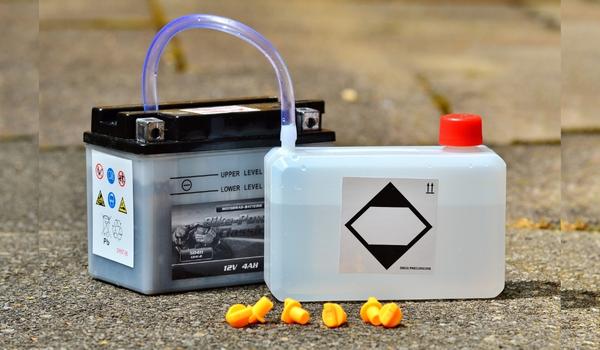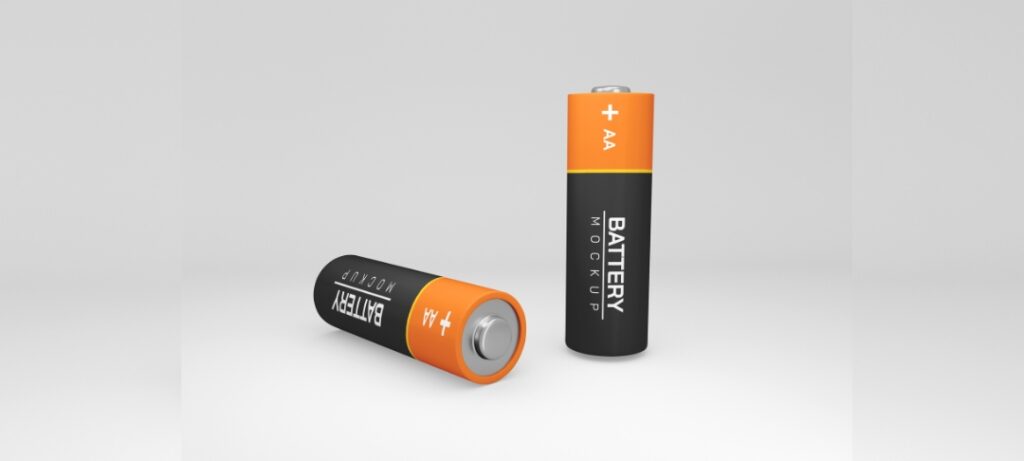The purpose of this blog post is to provide information to travelers about the regulations and safety guidelines for carrying batteries on a plane. With the increasing use of electronic devices, it’s important to know the rules and best practices for transporting batteries while traveling.
This post will cover the different types of batteries, airlines’ regulations for carrying them, proper packaging and transportation, the impact of batteries on air travel safety, and laws and restrictions related to carrying batteries on a plane. We will also discuss the special considerations for travelers with disabilities, business travelers, and photographers.
Types of batteries
Batteries can be broadly categorized into two types: primary batteries and secondary batteries. Primary batteries, also known as non-rechargeable batteries, are designed to be used once and then disposed of. Examples of primary batteries include alkaline batteries and zinc-carbon batteries.
Secondary batteries, also known as rechargeable batteries, can be recharged and used multiple times. Examples of secondary batteries include lithium-ion batteries and nickel-cadmium batteries.
Lithium-ion batteries are commonly used in electronic devices such as laptops, smartphones, and cameras. They have a high energy density and long shelf life, making them a popular choice for portable electronic devices.
Lithium metal batteries, also known as lithium primary batteries, are non-rechargeable batteries that contain lithium metal or lithium compounds as the anode. These batteries have a higher energy density than lithium-ion batteries and are commonly used in devices such as remote controls and smoke detectors.
Airlines’ regulations for carrying batteries
Airlines have specific regulations for carrying batteries on board a plane. These regulations vary depending on whether the batteries are carried in carry-on or checked baggage, as well as the type of battery.
For carry-on baggage, the Federal Aviation Administration (FAA) allows passengers to bring spare lithium-ion batteries with a rating of up to 100 watt-hours per battery. However, these batteries must be placed in carry-on baggage and not in checked baggage. The Transportation Security Administration (TSA) also has specific guidelines for carrying lithium-ion batteries in carry-on baggage.
For checked baggage, the FAA prohibits passengers from carrying spare lithium-ion batteries with a rating of more than 100 watt-hours per battery. The TSA also has specific guidelines for carrying lithium-ion batteries in checked baggage.
Additionally, airlines have regulations for carrying devices that contain batteries, such as laptops and smartphones. These devices must be turned on or proven to be powered on during security screening.
Packing and transportation of batteries
Proper packaging is crucial when transporting batteries. The FAA recommends that spare batteries be placed in a plastic bag or protective pouch and that the terminals be covered with electrical tape or another insulating material to prevent short-circuiting.
When transporting damaged or recalled batteries, it is important to follow the instructions provided by the manufacturer or the FAA. Damaged batteries may not be transported as cargo or in carry-on or checked baggage.
Labeling requirements for batteries also vary by type of battery. According to the International Air Transport Association (IATA), lithium-ion batteries must be labeled with the “UN3480 Lithium ion batteries” or “UN3090 Lithium metal batteries” label.
Impact of batteries on air travel safety
Batteries pose a risk of fire or explosion when they are damaged, overcharged, or short-circuited. This risk is why airlines have strict regulations for carrying and transporting batteries.
Additionally, batteries can also pose a risk of leakage, which can damage electronic devices and potentially harm people. To minimize these risks, it’s important to follow the guidelines for properly packaging and transporting batteries. – Airlines also take measures to ensure the safety of passengers and crew when it comes to batteries. For example, some airlines may prohibit the use of certain types of electronic devices during certain phases of flight, such as takeoff and landing. Additionally, some airlines may prohibit the use of electronic devices with damaged or recalled batteries.
Batteries and air travel laws
The FAA and TSA have specific regulations for carrying batteries on a plane. The FAA regulates the carriage of batteries on both passenger and cargo aircraft, while the TSA regulates the carriage of batteries in carry-on and checked baggage.
Additionally, there are international regulations for carrying batteries on a plane. The International Air Transport Association (IATA) has guidelines for the transportation of lithium batteries by air. These guidelines are based on the regulations set by the International Civil Aviation Organization (ICAO).
Batteries and air travel restrictions
There are restrictions on carrying batteries on certain flights, such as flights to and from certain destinations. For example, some airlines may prohibit the carriage of spare batteries on flights to destinations where the risk of fire or explosion is considered to be higher.
There are also restrictions on carrying batteries in certain quantities. For example, passengers may be limited in the number of spare batteries they can carry. Additionally, some airlines may prohibit the carriage of certain types of batteries, such as lithium-metal batteries.
Carrying batteries on a plane: Dos and Don’ts
When carrying batteries on a plane, it’s important to do the following:
· Pack spare batteries in carry-on baggage rather than checked baggage
· Keep spare batteries in a plastic bag or protective pouch
· Cover the terminals of spare batteries with electrical tape or another insulating material to prevent short-circuiting
· Keep devices that contain batteries, such as laptops and smartphones, in carry-on baggage rather than checked baggage
When carrying batteries on a plane, it’s important to avoid the following:
· Carrying damaged or recalled batteries
· Carrying spare batteries with a rating of more than 100 watt-hours per battery in checked baggage
· Carrying spare batteries that are not protected from short-circuiting
· Carrying loose batteries in pockets or bags where they can come into contact with metal objects
· Tips for safely carrying batteries on a plane include:
· Checking with the airline for any additional regulations or restrictions before traveling
· Keeping batteries in their original packaging, if possible
· Keeping batteries at room temperature, as extreme temperatures can affect their performance
· Keeping batteries away from liquids, as they can cause leakage or damage
Batteries and air travel for people with disabilities
People with disabilities may need to carry batteries for medical devices, such as mobility scooters or portable oxygen concentrators. These batteries may be subject to different regulations than those for spare batteries.
It is important for travelers with disabilities to check with the airline for any special regulations or restrictions for carrying batteries for medical devices. Additionally, it is important to keep batteries for medical devices in carry-on baggage and to have documentation for the device readily available.
Carrying batteries on a plane for Business Travel
Business travelers may need to carry batteries for electronic devices, such as laptops and portable printers, used in their work. It is important for business travelers to check with the airline for any specific regulations or restrictions for carrying batteries for electronic devices used in business. – To safely transport batteries for business travel, it’s important to follow the guidelines for properly packaging and transporting batteries. Pack spare batteries in carry-on baggage rather than checked baggage and keep devices that contain batteries in carry-on baggage as well. It’s also important to keep batteries at room temperature, to keep them away from liquids, and to have documentation for the electronic device readily available.
Batteries and air travel for photographers
Photographers may need to carry batteries for photography equipment, such as cameras and flashes. It is important for photographers to check with the airline for any specific regulations or restrictions for carrying batteries for photography equipment.
To safely transport batteries for photography equipment, photographers should follow the guidelines for properly packaging and transporting batteries. Pack spare batteries in carry-on baggage rather than checked baggage and keep devices that contain batteries in carry-on baggage as well. Additionally, it’s important to keep batteries at room temperature, to keep them away from liquids, and to have documentation for the photography equipment readily available.
How to check the Watt-hours of a battery
In order to comply with the regulations for carrying batteries on a plane, it’s important to know the watt-hours (Wh) of a battery. The watt-hour is a measure of the energy capacity of a battery.
To check the watt-hours of a lithium-ion battery, you can refer to the label on the battery or the packaging. The label should indicate the watt-hours, usually written as “Wh”.
If the label or packaging doesn’t indicate the watt-hours, you can calculate it by multiplying the voltage (V) and the ampere-hours (Ah) of the battery. The formula is Wh = V x Ah.
Keep in mind that the regulations for carrying batteries on a plane limit the watt-hours of a lithium-ion battery to 100Wh. This means that if you’re carrying a spare lithium-ion battery, it should have watt-hours of 100Wh or less.
Alternatives to carrying spare batteries
While it’s important to know the regulations for carrying spare batteries on a plane, it’s also a good idea to consider other options. Carrying spare batteries can be an inconvenience, and it’s not always possible to predict how much battery life you’ll need on your trip.
One alternative to carrying spare batteries is to bring a power bank. A power bank is a portable battery that can be used to charge electronic devices. Power banks can be carried in carry-on baggage and can be a convenient way to keep your devices charged while traveling.
Another alternative is to invest in a device that has a long battery life. Some laptops, tablets, and smartphones have long battery life, which can help you avoid the need to carry spare batteries.
Additionally, you can also charge your devices before your travel and look for places where charging is available during your trip.
How to safely dispose of batteries

When batteries reach the end of their life, it’s important to dispose of them properly to minimize the impact on the environment and to avoid the risk of fire or explosion.
The best way to dispose of batteries is to recycle them. Many retailers, including big-box stores, electronics stores, and battery manufacturers, have recycling programs for batteries.
If you can’t find a recycling program nearby, you can also dispose of batteries at a hazardous waste facility. You can look for the nearest hazardous waste facility by searching online or contacting your local government.
When disposing of batteries, it’s important to keep them in a safe place and away from children and pets. It’s also important to keep the terminals covered to avoid short-circuiting.
Conclusion
Carrying batteries on a plane can be a bit tricky, with different regulations and restrictions to keep in mind. However, with a bit of planning and preparation, it’s possible to safely transport batteries while traveling.
This post has provided information on the different types of batteries, airlines’ regulations for carrying them, proper packaging and transportation, the impact of batteries on air travel safety, and laws and restrictions related to carrying batteries on a plane. Additionally, we have discussed the special considerations for travelers with disabilities, business travelers, and photographers.
Remember that it’s always a good idea to check with the airline for any additional regulations or restrictions before traveling. This will ensure that you are prepared and that your batteries are safely packed and transported. Additional resources for further information about carrying batteries on a plane can be found on the FAA’s website, the TSA’s website, and the IATA’s website.
